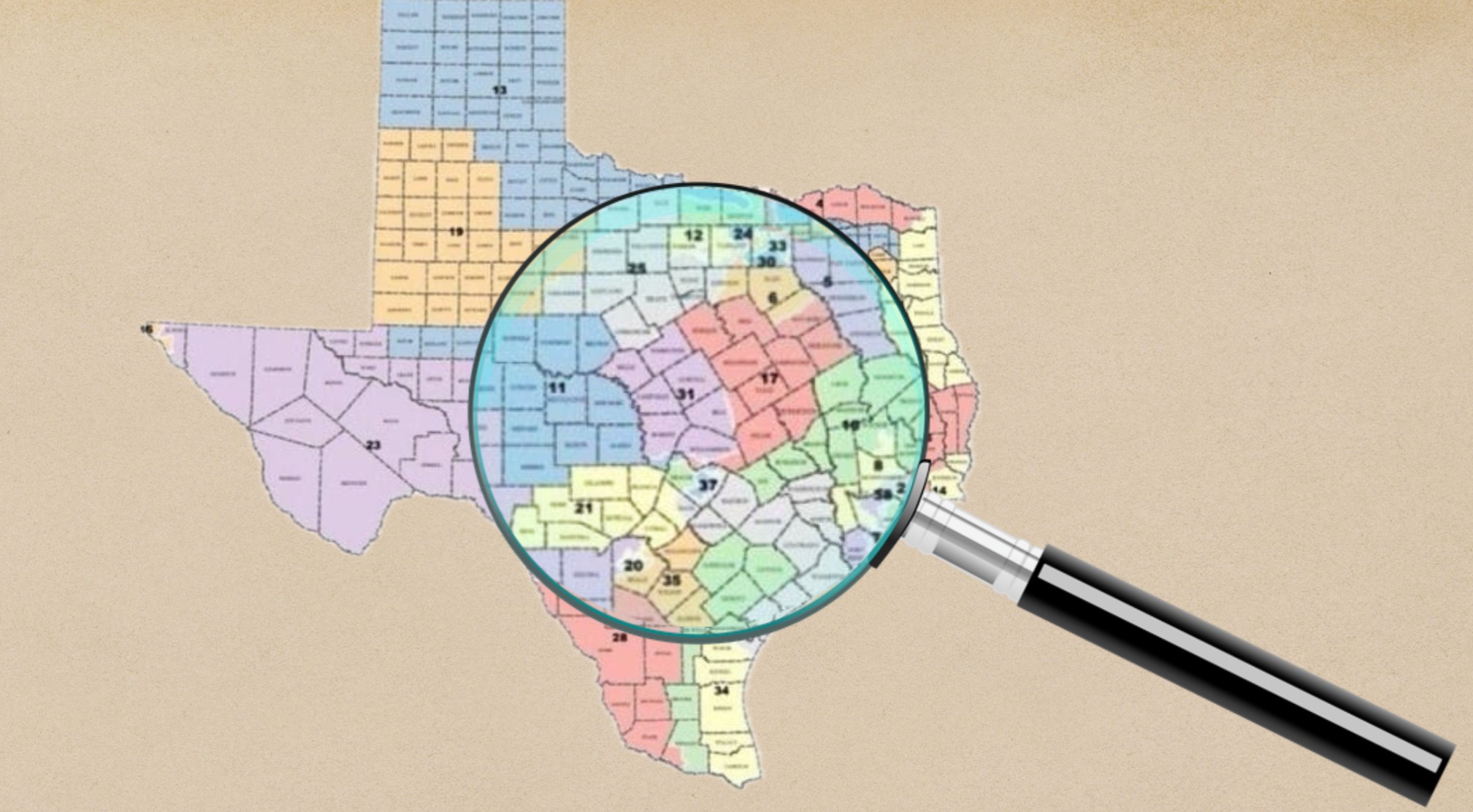Proposed Map Could Add 5 New GOP Congressional Seats

By Erin Anderson | Texas Scorecard | July 30, 2025
Following a first round of public hearings on mid-census congressional redistricting, Republican lawmakers have proposed new district maps that could increase the number of GOP-held U.S. House seats in Texas by five.
House Bill 4, filed Wednesday by Republican State Rep. Todd Hunter of Corpus Christi, includes a map with five new districts that President Donald Trump would have carried by at least 10 points in the 2024 election—including two Hispanic-majority districts in South Texas.
Release of the new map comes on the heels of several often-raucous public hearings hosted by special House and Senate committees formed to consider congressional redistricting during the ongoing special legislative session.
If the new map is adopted, Republicans could win 30 of the state’s 38 U.S. House seats in the 2026 mid-term elections, up from their current 25, helping the party maintain its congressional majority and continue Trump’s America First agenda.
Punchbowl News identified Democrats whose districts are targeted as:
—U.S. Rep. Henry Cuellar (TX-28), who is facing federal bribery and money-laundering charges. His South Texas district swung Republican in the last presidential race.
—U.S Rep. Vicente Gonzalez (TX-34), whose South Texas district also backed Trump in 2024.
—U.S. Rep. Julie Johnson (TX-32) in the Dallas area.
—U.S. Rep. Marc Veasey (TX-33) in Dallas-Fort Worth.
—U.S. Reps. Lloyd Doggett (TX-37), the “dean” of the Texas delegation who has held a House seat since 1995, and Greg Casar (TX-35). The two may end up pitted against each other in a single district.
Mapmakers also significantly shifted boundary lines in Houston-area districts to convert a newly drawn TX-09 from Democrat to Republican.
Texas Democrats responded by saying they would use “every available method” to oppose the redistricting plan, including fleeing the state for another quorum break.
But State Rep. Ramon Romero (D–Fort Worth) acknowledged last week that Democrats are “not likely” to sustain a quorum break long enough to block a vote on redistricting.
Redistricting is required every 10 years to reflect population changes recorded by the decennial census, but it may also be done at other times.
Texas Republicans’ plans for possible mid-census redistricting have been percolating since last year, following recent court decisions including the U.S. Fifth Circuit’s 2024 ruling in the Petteway v. Galveston County redistricting case.
The Petteway decision reversed decades of precedent and established that districts based on “coalitions” of minority groups are not protected by the Voting Rights Act.
Prompted by a letter from the U.S. Department of Justice Civil Rights Division citing Petteway and other cases, Texas Gov. Greg Abbott added congressional redistricting to his agenda for the special legislative session.
Lawmakers held a series of preliminary committee hearings without specific maps.
Redistricting opponents dominated the hearings. Many cheered, applauded, and engaged in personal attacks during testimony—largely unchecked by the Republican committee chairmen, State Rep. Cody Vasut of Angleton and State Sen. Phil King of Weatherford.
Democrat after Democrat urged Republicans not to redraw the current district maps, even as Democrats are suing the state to redraw the maps.
Current districts were drawn in 2021 following the flawed 2020 Census that officials later acknowledged significantly undercounted several states, including Texas, while overcounting others.
State officials testified in court last month that they drew district boundaries to maximize Republican partisan advantage, after the U.S. Supreme Court cleared the way for partisan gerrymandering in 2019.
Attorney General Ken Paxton also affirmed in a response to DOJ Assistant Attorney General Harmeet Dhillon that the state drew current districts “blind to race” and in accord with “traditional redistricting criteria.”
Under certain circumstances, the Voting Rights Act requires drawing race-based minority-majority “opportunity” districts and generally requires new maps to maintain at least the same number of minority opportunity districts as the previous plan, perpetuating “protected” race-based districts.
Since Texas drew its 2021 map, Petteway established that “coalition” districts are not protected and thus are no longer legally defensible in the Fifth Circuit, which includes Texas, Louisiana, and Mississippi.
Paxton agreed with Dhillon that recent “substantial changes” to the legal and political landscape opened the door to review the state’s congressional map and said he welcomed “continued dialogue about how Texas’s electoral districts can best serve Texas voters without regard to outdated and unconstitutional racial considerations.”
Law professor Ellen Katz, who was an invited witness at initial House and Senate committee hearings, testified that Petteway does not require coalition districts to be drawn or dismantled, and argued that redrawing the districts would constitute impermissible race-based redistricting.
As in 2021, mapmakers appear to have focused on maximizing Republican partisan advantage. The new map is still based on 2020 census data.
The House Select Congressional Redistricting Committee has scheduled a hearing on HB 4 and the proposed map for Friday, August 1.
The Senate Special Committee on Congressional Redistricting has not yet scheduled a hearing on the map, but at the request of Democrat members, King invited Dhillon to testify before the committee.
Erin Anderson
Erin Anderson is a Senior Journalist for Texas Scorecard, reporting on state and local issues, events, and government actions that impact people in communities throughout Texas and the DFW Metroplex. A native Texan, Erin grew up in the Houston area and now lives in Collin County.